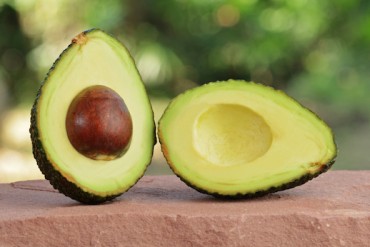Today’s edition of The Sunday Times magazine features a report about the fact that manmade chemicals are building up in our bodies – starting when we’re in the womb – and that these chemicals are, for the most part, completely untested.
It’s the most hard-hitting and intelligent piece on this topic I have ever seen in the mainstream media.
The feature, by writer Richard Girling, is entitled “Sugar and spice and all things nasty: just what are our little ones made of?” and as well as going over information you may already be aware of since you found your way to this website, it contains some shocking facts that blew me away and that I believe will blow you away, too.
I wish I could link to the article as it contains much additional information, but it’s behind a paywall – so a quick summary:
- The average number of prescriptions per year for a child in the UK is an already staggering 3.3, for an adult in the 55 to 64 age group it’s 16.5, and among the over-85s it’s 42.
- You may already be aware that drugs such as painkillers, antibiotics and the contraceptive pill have been detected in the environment by scientists around the world, including in the water supply. But this article reports that measurable quantities of cancer chemotherapy drugs are also being found.
- Researchers have found pharmaceutical drugs in commercially grown broccoli and cauliflower that have been fertilised with dried sewage sludge. Yet another reason to go organic…
- Almost inconceivably, especially given the figures cited in the first bulletpoint, pharmaceutical drug consumption is predicted to treble within the next 10 years. “Alarm bells should be ringing off the wall,” writes Girling.
- In May, the Wolfson Institute and London School of Medicine and Dentistry recommended that everyone over the age of 55 should take drugs to reduce their cholesterol and blood pressure.
- We’ve all heard about male fish developing female characteristics due to oral contraceptives in the water they swim in, but now it’s happening in male animals as big as alligators.
- Some 800 manmade chemicals in the environment are known to be endocrine disruptors (the so-called “gender benders”).
- Bisphenol A (BPA) is used to make plastics and is a ubiquitous component of food and drinks packaging. In 2008, a team of researchers found that the quarter of the population with the most BPA in their bodies were more than twice as likely to suffer heart disease or diabetes as the quarter with the least.
- To quote directly from the article, “Researchers backed by the US government have identified potential relationships between even low doses of BPA and problems such as ADHD, autism, obesity, reduced sperm counts, abnormal sexual development and prostate and breast cancers. Most worryingly, these effects occurred in laboratory animals exposed to BPA ‘within the range of exposure of the typical human living in a developed country’, where nearly everyone has measurable levels of BPA higher than those in the affected animals.”
- The main subject interviewed for this article is Michael Depledge, Britain’s leading expert on the environment and human health. He was formerly chief scientist of the Environment Agency and a member of the Royal Commission on Environmental Pollution. The article reports that Depledge and his family avoid consuming anything that has been packed in plastic.
- Quoting directly again, “Tests on mothers before and after birth suggest that chemicals are offloaded to their infants. Babies are now born ready contaminated with BPA, PCBs, phthalates, organochlorine pesticides […] which accumulate in their most delicate organs, including the brain. Afterwards they will receive another dose, including anti-bacterials and brominated flame retardants, in their mothers’ milk.”
- Although the notorious agricultural pesticide DDT was banned in the 1970s, it is still accumulating in children.
- There are around 100,000 chemicals in existence worldwide, around 30,000 of which are in common use. Only 3,500 of them have been tested.
The article ends with a large section on nanotechnology – both its potential benefits, and also the fact that nobody has any idea how nanomaterials affect human health. Yet as use of this technology grows apace, nanoparticles are building up in the environment at an alarming rate and before long we will start to see that question answered.
The average person naturally assumes that the government would never allow this – that if chemicals are in use, they must have been tested and found to be safe. The reality, as this article points out, is that the majority of chemicals haven’t even been tested individually on animals, let alone on humans and in the way we’re exposed to them in the real world – i.e. as a never-ending cocktail with an ingredient list that runs to hundreds.
The article ends with Girling wondering when the UK government will wake up, and concluding: “In the meantime, Depledge remains a nagging voice, insisting that a pollution-free environment is essential for healthy people. Common sense gives us instant answers. Science and government take a little longer.”





Great summary article, Sarah. For once we have intelligent commentary on the truth about what’s happening in the environment and how it is affecting our health in the mainstream media. Let’s hope this is a trend that continues…
View CommentTotally needed to see this today. I’m a recent convert to natural …. everything. I’d been thinking about making some money-saving compromises. After reading this … no chance.
View Comment